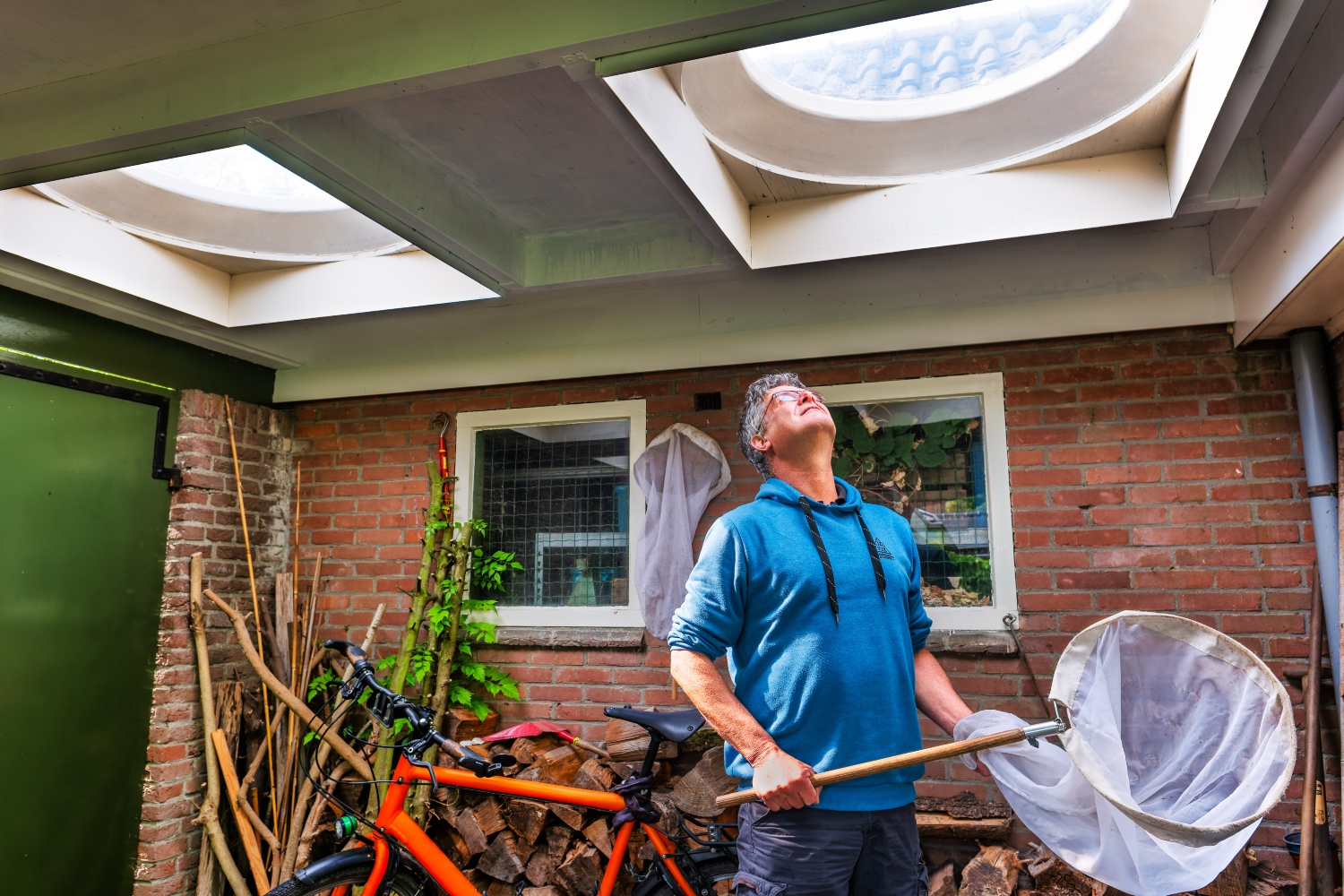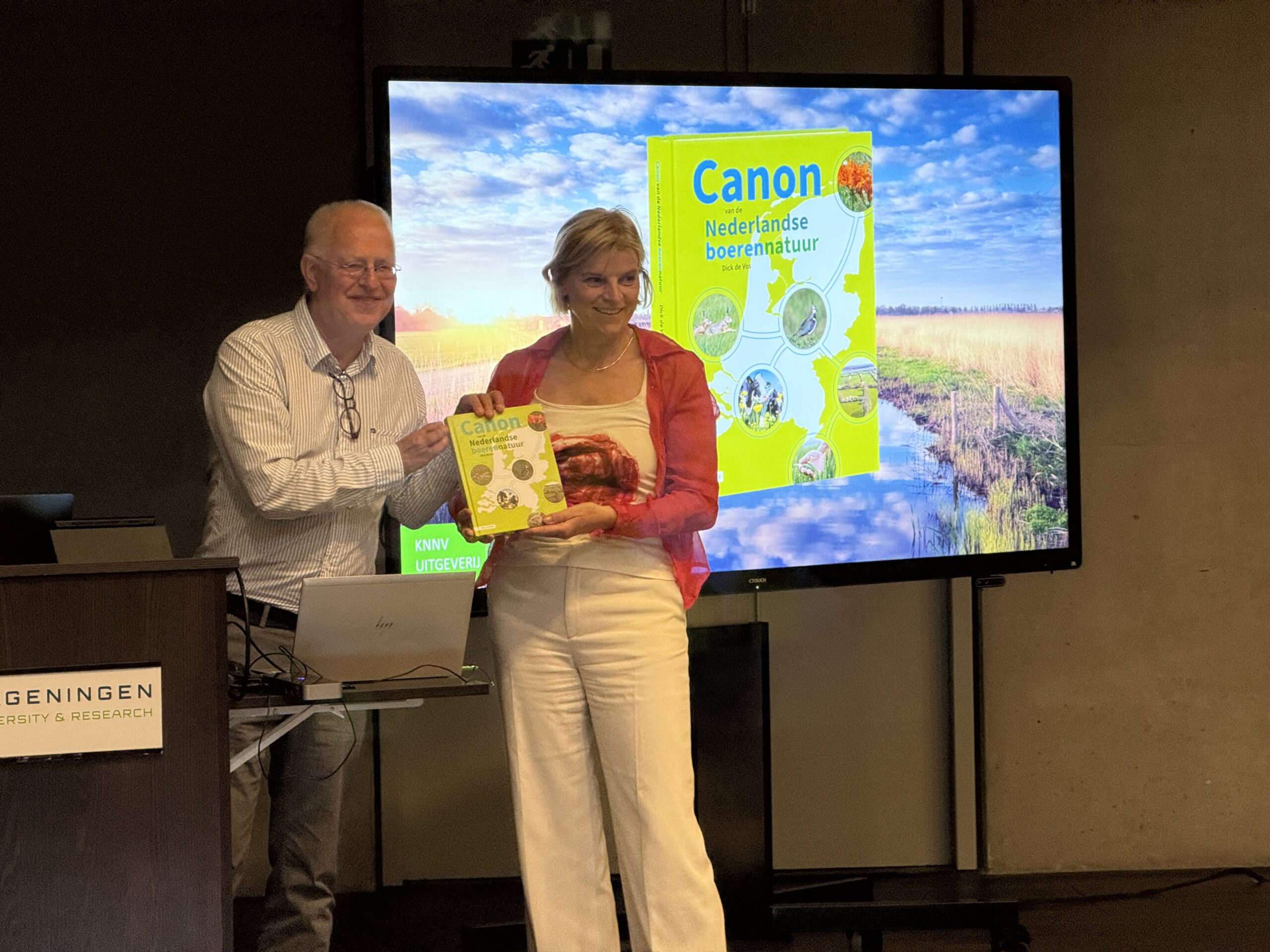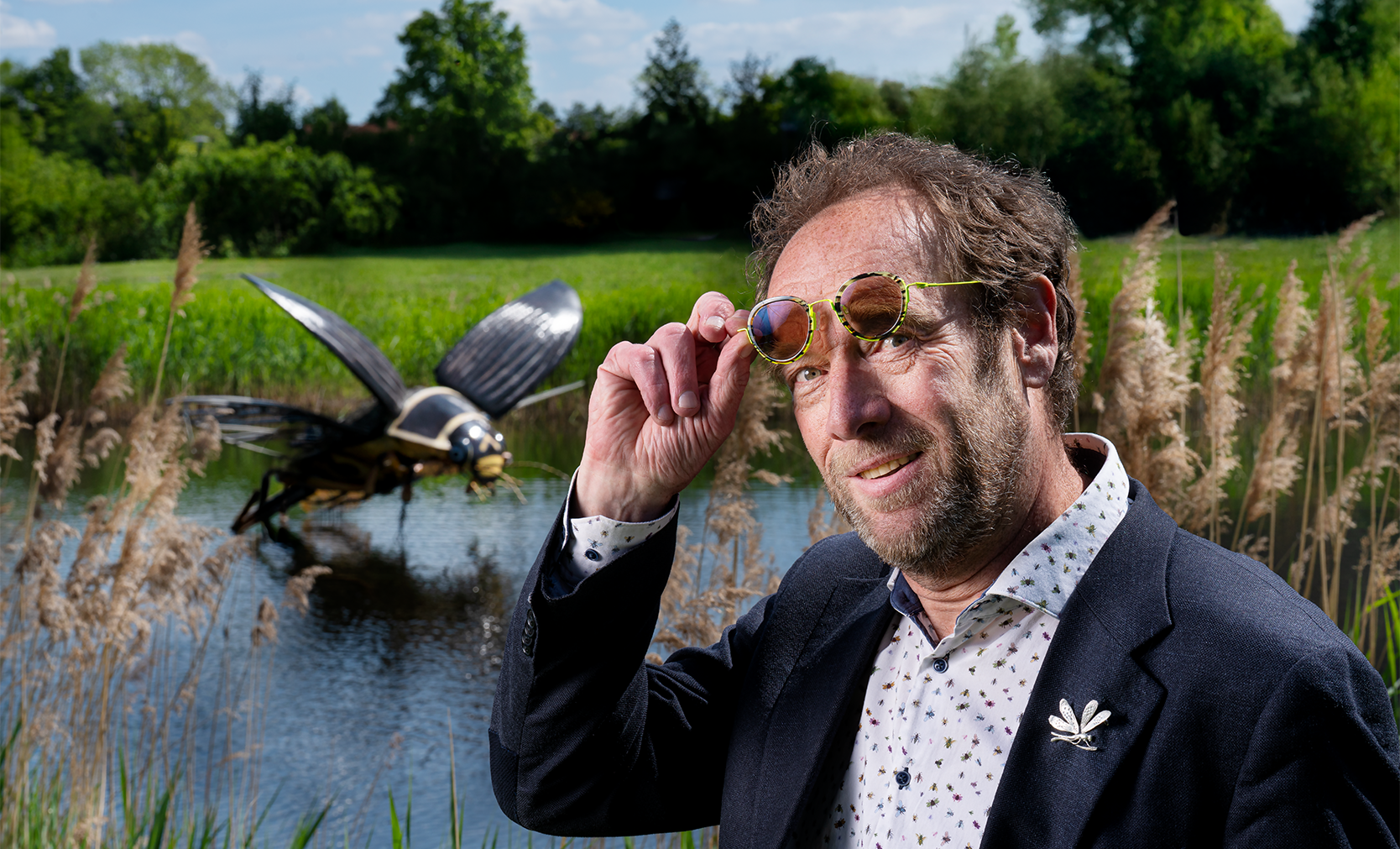Biologist Dick Belgers has already spotted 2,800 species of insects over the past ten years. Just in his garden. An ordinary mortal might spot between 10 and 20 species of small flying critters in their garden, and a biologist would undoubtedly see a few more. But 2,800 different insects? In an urban garden? Let that number sink in for a bit.
Dick Belgers is not even an entomologist. A botanist originally, he studied at the applied sciences university in Wageningen (STOVA and HAS Larenstein). He got fascinated by insects when he was still living in the Blauwe Kamer area, near the Opheusden ferry. ‘First it was wild bees; I’m a beekeeper. In 2008, I had a burnout and I and started catching insects with a net. That’s when my love for entomology started. For wasps, bees, flies and beetles. For everything, really. I’m a generalist.’
Ten years ago, Belgers moved to Nassauweg on the slopes of Wageningse Berg, where he has a beautiful garden of around 500 square metres. Quite big for an urban garden. Since then, he has been working on his collection. He lists and photographs everything with wings and six legs (‘I’m not as interested in spiders, woodlice and snails’) and that endeavour has produced the incredible figure of 2,800 species in ten years. A new one gets added every week. ‘I’ve been working on my personal BioBlitz for ten years.’
Belgers collects species, but he doesn’t call himself a species hunter. ‘I don’t travel all over the Netherlands to get to the top of the wildlife observations website. Absolutely not. For me, it’s about the ecology in my garden. My passion is to give a face to the insects that aren’t seen as cute. Literally, by photographing them. Some have never been photographed. Of those 2,800 species, there are 60 to 70 that are completely new to the Dutch fauna — they have never been recorded by anyone before. Much of that still has to be published.’
Skylights
The Dutch fauna includes 20,000 species of insects. This means about 14 per cent of them were spotted in Belgers’ garden. How is that possible? And why does he see so many new species? There are several answers to that question. Belgers’ most important ‘weapons’ are the four skylights in the roofed-in area at the back of his house. ‘I catch about 85 to 90 per cent of my insects in my skylights. Alive — that’s important to me. I don’t use traps that kill them. I do have to check every day, otherwise they’re gone again.’
I don’t travel all over the Netherlands; for me it’s about the ecology in my garden
A second explanation is the location. ‘This isn’t your run-of-the-mill urban garden,’ Belgers acknowledges. ‘Especially not with the surroundings here, the floodplains, the old oaks along Generaal Foulkesweg, the nearby arboretum and the slope that heats up in the sun. This place is an oasis, or really several connected oases. There are large scissor-bees here, for example, that are attracted to buttercups. I don’t have those flowers in my garden, but they are found in the floodplains. Those bees come here to build nests in my large bee hotel.’
Another factor is that the insects are doing poorly in Dutch fields. Opportunist species are therefore retreating to the towns and cities. Belgers: ‘There are European wool carder bees here, which barely exist outside of urban areas anymore. They have adapted to this environment. Cities are becoming greener, paving stones are being removed and this attracts insects. And don’t forget that we’ll be getting a lot more insects from the south in the near future due to climate change. The hotter it gets, the more insects. Slowly but surely, they’re coming this way.’
Obscure critters
So Belgers will be busy for a while. ‘I think I should be able to get to about 4,000 species. I reckon there are many more flying around than we assume. An ecosystem like this is full of them. You just have to see and catch them.’ That’s what you need people like Dick Belgers for, and the small army of experts he can call on. ‘I don’t do all of this alone. When I catch a beastie that I think is special, it goes into a jar with alcohol and I send it to the experts. There are so many obscure critters out there.’
Cities are greener with fewer paving stones, which attracts insects
That huge diversity also puzzles him. An example: ‘There are about 80 species of fungus gnats here. Very strange, spotted insects; more like flies than mosquitoes, because they don’t bite. There are about 250 species of fungus gnats in the Netherlands, and they all have a one-to-one relationship with fungi. They are very small creatures that can’t fly very far. So there must be fungi somewhere nearby. But where?’
He has been sharing his passion via LinkedIn #magheteenbeestjemeerzijn for the past two years. ‘I love doing that. It gives me so much energy.’ He posts a photo with a brief comment almost every day. The photos are always identical in design: an insect on a sheet of white paper, lit in such a way that the insect casts a shadow on the paper. ‘This way it looks like they are coming off the page.’ The posts get a lot of response. ‘Recently, I took a photo of two red Heteroptera, a European firebug and a cinnamon bug. My post was about the differences. It’s been viewed 65,000 times. Isn’t that crazy?

 Biologist Dick Belgers: ‘I catch about 85 to 90 per cent of my insects in my skylights. Alive — that’s important to me. I don’t use traps that kill them.’ Photo Guy Ackermans
Biologist Dick Belgers: ‘I catch about 85 to 90 per cent of my insects in my skylights. Alive — that’s important to me. I don’t use traps that kill them.’ Photo Guy Ackermans 

![[Seriously?] Something fishy about BioBlitz](https://www.resource-online.nl/app/uploads/2025/05/WEB_DeNeusUK.png)